Yamaha N2 Piano Review
We rated the Yamaha N2 an 8/10. The N2 is a high-end digital piano. It has very powerful 80-watt speakers, which is one of its best selling points. The VRM and sound bank of this instrument is extremely high quality. However, we were a bit disappointed to see that this particular model does not include the imperial Bosendorfer sample. In fact, it only has 5 sounds total, so we took off one point. The N2 doesn’t have Bluetooth, either, so we gave it an 8/10 total. Overall, this is a powerful instrument It is a good starter piano for players of any age.
$11,000.00
We rated the Yamaha N2 an 8/10. The N2 is a high-end digital piano. It has very powerful 80-watt speakers, which is one of its best selling points. The VRM and sound bank of this instrument is extremely high quality. However, we were a bit disappointed to see that this particular model does not include the imperial Bosendorfer sample. In fact, it only has 5 sounds total, so we took off one point. Yamaha N2 doesn’t have Bluetooth, either, so we gave it an 8/10 total. Overall, this is a powerful instrument. It is a good starter piano for players of any age.
Overview

The Yamaha N2 keyboard is part of Yamaha’s Avant Grand series of high-level digital pianos. The shape of the piano differs from the NU1X. It’s boxier in design – giving it something of an old-fashioned, square look – and has two 80W speakers built into the lower back part of the piano and ten more 22W speakers dotted around the piano in addition!
The N2 is close to the NU1X in overall specs, but has ten fewer voices and less recording capability. The N2 is at a much higher price point because a lot more has been put into the speaker system, giving it a huge output. If you’re looking for a piano for your living room, the N2 might exceed your needs. There is a comparison chart of the Avant Grand series at the end of this review.
Keyboard
Like the other pianos in the Avant Grand series, the N2 inner workings are made of wood and weighted to feel exactly like a grand piano. In fact, the layout of the wooden action replicates the action of a grand while the NU1X replicates an upright action. The keys on the Yamaha N2 are made of “Ivorite” which mimics the feel of ivory, reducing the likelihood of slipping fingers.
The other models in the AvantGrand series are the NU1X (the “upright action” model). The N1, N3, and the N3X all have “grand piano action”. There are no strings, but real hammer action. The other big difference is in the size, power, and location of the speakers for each piano. Check out the comparison chart at the end of this review to quickly see the main differences between these four pianos.
All Avant Grand pianos benefit from a “soft close” lid. This is a real plus if you have children. A piano lid can fall suddenly with quite a lot of force, putting little fingers and hands at risk, so this is a real plus in my book.
Sound
The original sound is recorded from the left, right, rear, and center of the acoustic piano for maximum emersion in the sound for the player.
The Tactile Response System (TRS) aims to give you the sensation of playing a real piano by replicating the vibration a pianist feels as close as possible. Yamaha has done this by putting two transducers (loudspeakers) into the soundboard underneath the keyboard which sends natural reverb throughout the piano. When you’re sitting at the piano playing, the reverb will resonate through your hands – and feet if you’re using the pedals. The TRS system can be turned on and off and also has three settings so you can choose the level you prefer. The TRS system works even if you are using headphones through one of the two headphone jacks.
Like the NU1X, the main sound of the N2 is a sampled Yamaha CFX acoustic grand. The sound of each note has been deeply sampled, including decay, using VRM – Virtual Resonance Modelling. This records the pitch as authentically as possible, including the effects of the strings and the soundboard.
With any of the pianos in the Avant Grand series, when you connect your headphones, the binaural surround sound immerses you in the sound. As long as you invest in a good pair of comfortable headphones, you’re quite likely to forget that you’re wearing headphones.
While the NU1X has a Bosendorfer as its second piano, the Yamaha N2 does not.
Features
Voices
While the NU1X has 15 onboard voices, the N2 only has 5 instrument sounds. These are Grand Piano 1 and 2, Electric Piano 1 and 2, and a Harpsichord. Each voice has its own demo song. Yamaha suggests Grand Piano 1 is most suited to classical music while Grand Piano 2 is brighter and more contemporary and would suit pop music. Overall, the focus with the N2 is definitely less on multiple selections and features and more on the sound and feel, making it a real contender for serious pianists.
If you are looking for a more selection of voices, the NUX1 comes with a bigger selection of pianos, including the Studio Grand, Ballad Grand, Upright, Stage Electric, DX electric, vintage electric, and two harpsichords, celesta, three types of organ and a piano and string mix.
Adjusting the level of VRM (Virtual Resonance Modelling)
The instrument voices on the Yamaha N2 have a default setting of “VRM on” so you get the full impact of the deep sampling of the original. However, you can change elements of it:
- Damper Resonance Depth: 0 – 10 (default setting is 5). This affects the sound when you use the damper pedal.
- String Resonance Depth: 0 -10 (default setting is 5). This relates to the effect heard when playing the keyboard.
- Aliquot Resonance Depth: 0 – 10 (default setting is 5). This affects the amount of sympathetic resonance from the very top notes of the piano which are never damped (even on an acoustic piano) and therefore vibrate freely with every note played.
- Body Resonance Depth: 0 – 10 (default setting is 5). This changes the amount of resonance from the actual case of the piano.
Preset songs
There are 10 preset songs which are all classical. They include Nocturne Opus 9 No. 1 by Chopin, Goldberg Variations by Bach, Clair de Lune by Debussy, and sections of sonatas by Beethoven and Mozart. You can change the speed of playback and you can play along with them if you like.
Recording
You can record one song on the Yamaha N2 (1 track only) on the N2 (Up to 10 songs on the NU1X). You can then copy and store the song using the USB flash drive jack.
Speakers
The N2 has an incredible speaker system which is made up of 2 X 80W speakers at the back of the piano and 10 X 22W around the piano which gives the piano a really great scope for the contrast between soft and loud playing. The speakers are of excellent quality and have more volume than you could ever want or need.
Reverb and effects
The reverb can be turned on and off very easily. It can also be altered from 0 – 20 depth. Holding the Reverb button down will make the setting show up on the LCD screen. The default setting depends on the selected voice and any changes will be lost when the power is turned off.
Transpose
The Yamaha N2 can transpose from – 6 to +6 in semitone increments. This can be very useful if you’re accompanying a singer and they want to try different keys. You can still play all the notes you have learned, or read on the sheet music, but it will sound in a different key. For instance, if you’re playing a song in the key of G and it feels too high for the singer, you can transpose down two semitones, and play the exact same notes, but it will play in the key of F.
You could use this function to play “Happy Birthday” or well-known holiday songs from sheet music that is often not written in a good key for the average person to sing.
The transposition function is reset once the power is turned off.
Fine Tuning
Fine-tuning can be used to detune the piano in tiny increments. This can be useful if you’re playing with a recording that isn’t quite in tune with your piano or playing with another performer who is playing an instrument that doesn’t quite get in tune. The setting range is 414.8–466.8Hz (=A3) Default setting: 440.0Hz (=A3). The fine-tuning selection stays in place after the power is turned off.
Scale tuning
The Yamaha N2 piano has seven different tunings to choose from – as do all Avant Grand pianos. These are Equal, Pure Major, Pure Minor, Pythagorean, Mean-tone, Werckmeister, and Kimberger. The Equal tuning is what we hear every day and the default. The Werckmeister and Kimberger tunings were used mostly in the baroque era and gives a true sound of music of Bach when using the harpsichord particularly. If you play in these additional tunings, you need to select the key that you’ll be playing in. The user manual shows you how to do this.
Metronome
There is a metronome button to quickly start and stop. You can choose which beat you want an accent on (accented with a bell sound) by holding down the metronome button and pressing a specific key on the keyboard. This corresponds to your time signature. You can also have no accent, which can be useful for playing repeated sections that aren’t necessarily starting on the down-beat. No accent is the default setting. The default is reset whenever the power is turned off.
The volume can be adjusted in the same way – holding down the metronome button and pressing a certain key on the keyboard. The setting can be from 1 to 20 with the default being 15.
The speed or “tempo” can be changed by pressing the plus or minus key. The tempo settings go from 5 to 500 bpm. I’m not sure 5 or 400 to 500 would ever be useful. Usually, when you want to play at high speeds you would play multiple notes per tick rather than have a superfast metronome. However, maybe some people like this. The default setting is 120 which is an average speed.
Connectivity
You can use the speakers from the N2 to play music from a portable audio player using the portable audio player’s headphone jack connected to the AUX IN jack on the piano.
You can use the L/L+R, and R jacks to connect alternative speakers.
The MIDI IN and OUT jacks require MIDI cables which are widely available. You can use these to connect other MIDI devices to the piano, such as another keyboard or synthesizer.
Connect the piano to a computer using the USB to HOST connection. This will allow you to use the piano to record into a DAW (Digital Audio Workstation) and use recording software such as Pro Tools, Cubase, or Garageband.
Strangely, the N2 has no Bluetooth connectivity. The NU1X does have Bluetooth.
Pedals
The Yamaha N2 comes with a 3-pedal set built into it. The pedals are high quality and feel just like the pedals you would find on an acoustic piano.
The far right pedal is the “Damper” or “Sustain” pedal and is the most used. Experienced piano players will place their right foot over this pedal without even thinking.
The pianos in the Avant Grand range come with a specially designed pedal so that you can interact with the amount of sustain even more exactly how the pedal on a grand piano would feel. It offers “half-pedal” action, which means you have control over how much sustain there is on any given notes you play. (On many keyboards you have a separate sustain pedal that you plug into the “damper” jack but they rarely give such a realistic pedal feel).
The middle pedal is called the “Sostenuto”. This is similar to the damper (or sustain) pedal except that it only sustains the notes you play at the time you activate the pedal and notes played subsequently are not sustained. There isn’t a great deal of call for this pedal. It’s generally used in advanced classical or contemporary piano music.
The far left pedal is known as the “Una Corda” (meaning “one string”). On an acoustic grand the entire hammer mechanism is shifted (and usually the keyboard too) so that the hammers only strike one string for each note. (Normally notes in the center of the piano have three strings each, the top notes have two, and the lowest notes, one). This gives a subdued, muted effect that can create atmospheric music. This is another pedal that isn’t in use a great deal except for fairly contemporary piano music. It could be used as a quiet practice device – and often is on an acoustic piano – but a digital piano has the benefit of a volume control and headphone jacks so it’s not needed for that use.
Specifications

- 88- note specialized piano action with acrylic and resin keys
- 4 types of touch sensitivity
- VRM sound reproduction for deep sampling
- 5 keyboard sounds, each with a demo song
- 5 onboard classical masterpieces to listen to or play along with
- Recording capability for 1 song, 1 track
- 256 note polyphony
- USB TO DEVICE, USB TO HOST, and MIDI IN/OUT/ headphone jack
Who Is It Suitable For?
Beginner
Any piano in the Avant Grand series would make a great starting instrument for any beginner, young or old. The only instrument that is better is a good quality acoustic piano (upright or grand – either is fine). Because the N2 is made to feel and sound as close to the real thing as possible, you couldn’t go far wrong. The touch sensitivity (how hard or softly you need to push on a note for it to play) has different settings (a plus over an acoustic piano which is just made the way it is – and can be a heavy touch for beginners – especially children).
Like the other pianos in this series, the Yamaha N2 comes with a built-in metronome which is very useful for students. Remember though that there are many metronome apps that can do the job just as well, and the majority of digital pianos have them built-in, so that alone isn’t enough of a reason to buy one of these.
If you are choosing for a child to learn on, the N2 might not be the best choice of the Avant Grand series, however, simply because it only has 5 voices. Inspiring a child to go to the piano and practice might be easier if they have a bigger choice of instruments to choose from. It’s not essential – after all an acoustic piano doesn’t give you choices – but if you’re going to go digital you might as well have the best of what it can offer over the acoustic.
Experienced and serious pianists
If you’re an experienced pianist trying to choose between a few high-quality digital pianos, you need to decide which you’ll get the most out of: a huge speaker system with a big, expressive sound and a very realist feel, or more scope to play different instruments and do some recording. I think most pianists wouldn’t deny this piano is quite impressive. The speaker system on this piano would suit experienced players who are performing in quite a big venue. It’s unlikely you would ever need to put the volume on full. For that reason, make sure you check out all the pianos in this price range and get the one that fits best with the space where you intend to put it. You don’t want to pay for a huge speaker system that you really don’t need.
Serious pianists will like the ability to play quietly, with headphones late at night, or just shutting out the rest of the household. The realistic action and evenness of the keys are quite hard to beat, in the digital range.
Pros and Cons

Pros
- Beautiful realistic weighted hammer action keys
- Top-quality piano sound
- Real piano feel and sound but never needs tuning and has volume control and headphones.
- Good connectivity
- Soft close lid
Cons
- No Duo or Split mode
- Limited recording capability onboard
- Only five voices on the N2
Quick View
| Keys | Specialized Piano Action for N2 “Ivorite” white keys |
| Touch sensitivity | 4 settings: Hard, Medium, Soft or Fixed |
| Sounds | 5 keyboard instrument sounds created with Spacial Acoustic Sampling. 10 preset songs. |
| Recording capabilities | Onboard MIDI recording for 1 song, 1 track, 30,000 note max. plus USB Audio Recording (WAV file) to USB Flash Drive |
| Metronome | Built-in metronome with 5 – 500 range |
| Polyphony | 256 notes can be played/sustained at once |
| Speakers | Built-in speakers 22W X 10, 80W X 2, total = 380W |
| Headphones & Connection | 2 headphone jacks, AUX IN L/L&R, R, AUX OUT L/L&R, R
USB TO DEVICE, USB TO HOST, and MIDI IN/OUT |
| Accessories | Music rest and full pedal set built into piano. Soft close lid. |
| Price point | $11,000 |
| Weight and Dimensions | 313lbs
58 X 40 X 21 inches |
Conclusion
The Yamaha N2 is an excellent digital piano with a great deal of thought and workmanship put into every detail. The action would satisfy the vast majority of pianists and be one of the best choices for anyone beginning to play. The only possible better choice would be a really good acoustic piano. At this price point, you would have the choice of buying a really good new piano. The reason that you might choose this one over another is mainly the noise factor. If you like to play late at night it’s fantastic to be able to lower the volume or use headphones but still have the feel of a real piano rather than a keyboard. Added bonus is it will never need tuning.
If you’re a serious piano player and looking for an instrument for private practice, this would serve you well. But obviously, at this price point, you have the option of buying many different types of really high-quality pianos, including a grand. Make sure you investigate all your options and try as many pianos as you can to make the best decision for yourself. If you buy a piano you really love to play, you’re likely to play more.
The bottom line is that if you have the budget and the space for this instrument, list your requirements and make sure you’re going for the correct model for your needs. But generally, you couldn’t go wrong with the purchase of a piano from the Avant Grand series.
Here is a quick overview of the models in the Avant Grand series and their main differences. They all have a “soft close” lid, 256 polyphony, and approximately the same connectivity, and recording capability. The N2 is the most different as it has a “soundboard resonator”.
| NU1X | N1 | N2 | N3 | |
| Speakers | 45W X 45W | 25W +
30W X 5 |
22W X 10 +
80W X2 |
22W X 10 +
30W X 4 + 80W X 2 |
| No. of voices | 15 | 5 | 5 | 5 |
| Action | Upright | Grand | Grand | Grand |
| Weight | 245lbs | 265lbs | 313lbs | 438lbs |

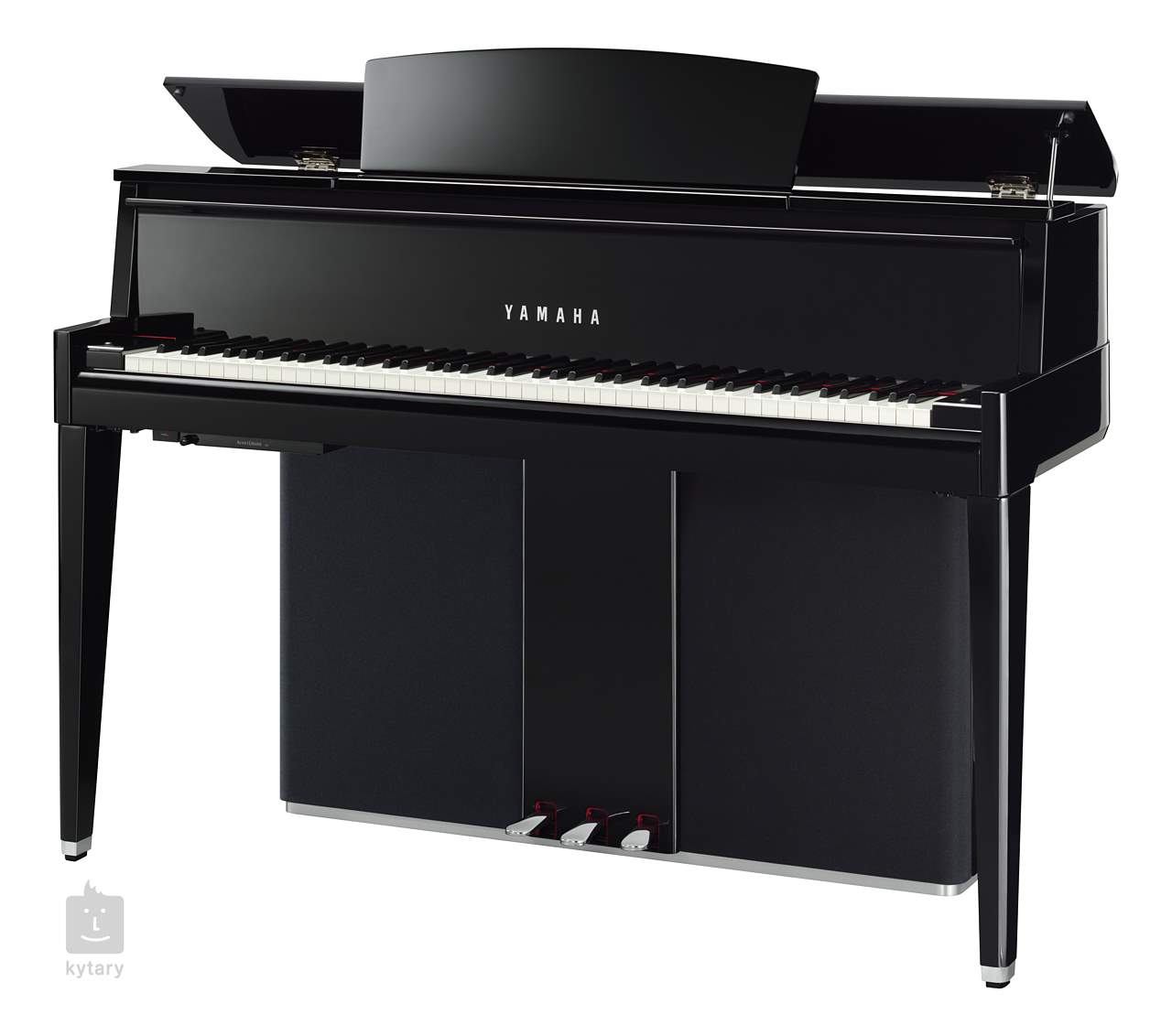
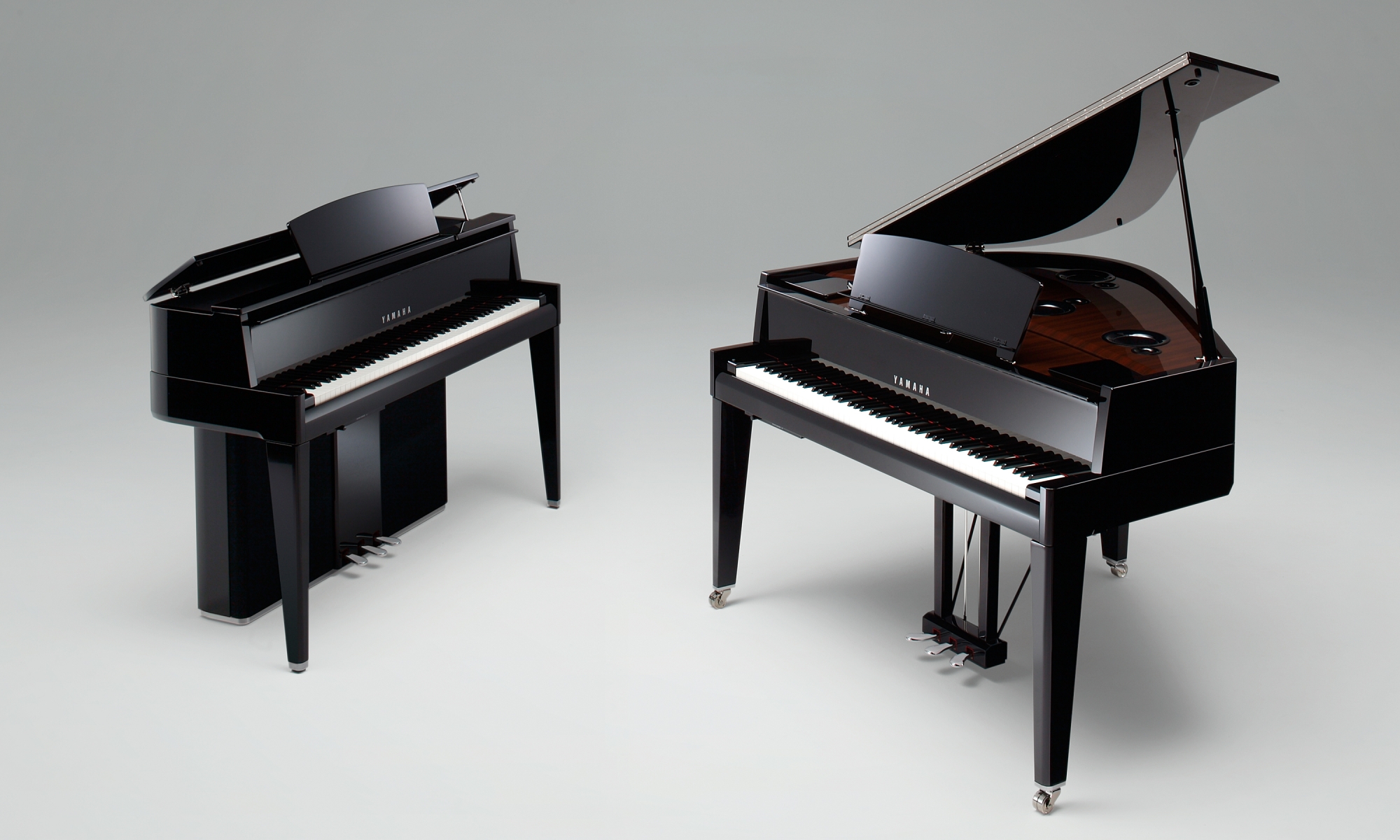
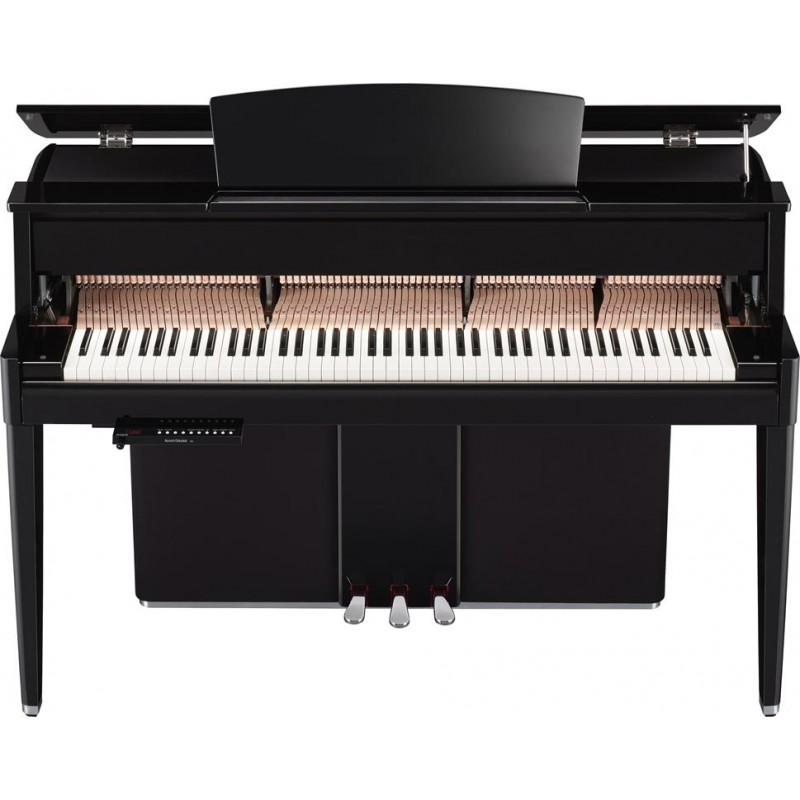
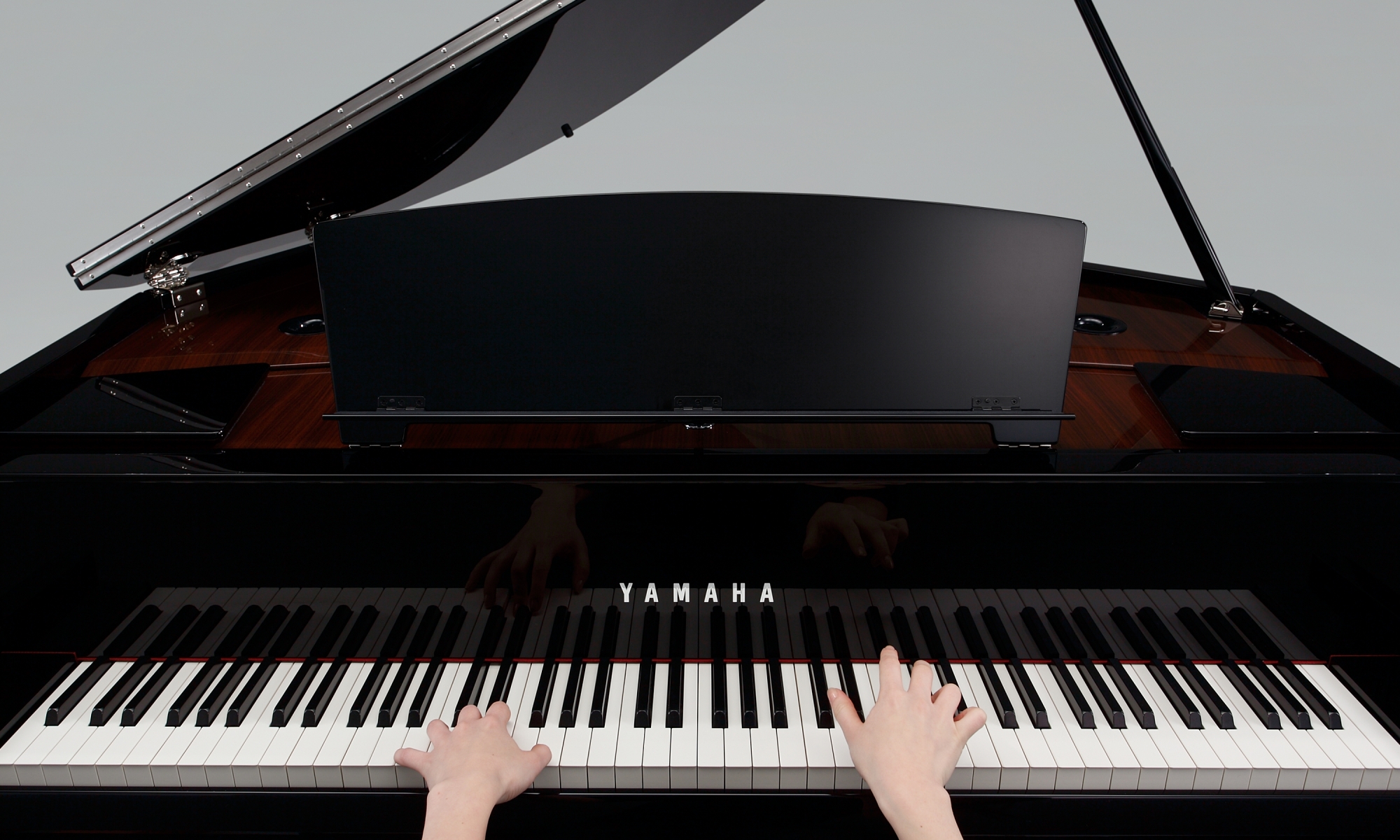
 We rated the Yamaha N2 an 8/10. The N2 is a high-end digital piano. It has very powerful 80-watt speakers, which is one of its best selling points. The VRM and sound bank of this instrument is extremely high quality. However, we were a bit disappointed to see that this particular model does not include the imperial Bosendorfer sample. In fact, it only has 5 sounds total, so we took off one point. The N2 doesn’t have Bluetooth, either, so we gave it an 8/10 total. Overall, this is a powerful instrument It is a good starter piano for players of any age.
We rated the Yamaha N2 an 8/10. The N2 is a high-end digital piano. It has very powerful 80-watt speakers, which is one of its best selling points. The VRM and sound bank of this instrument is extremely high quality. However, we were a bit disappointed to see that this particular model does not include the imperial Bosendorfer sample. In fact, it only has 5 sounds total, so we took off one point. The N2 doesn’t have Bluetooth, either, so we gave it an 8/10 total. Overall, this is a powerful instrument It is a good starter piano for players of any age. 




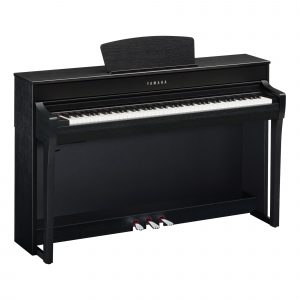
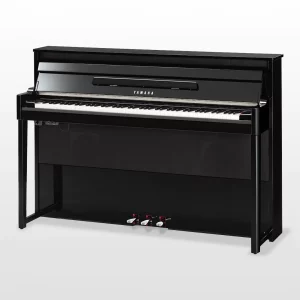
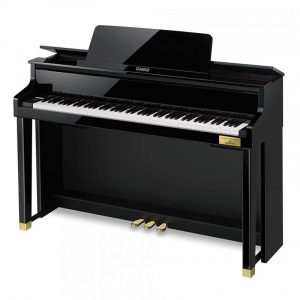
There are no reviews yet.